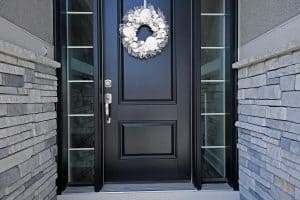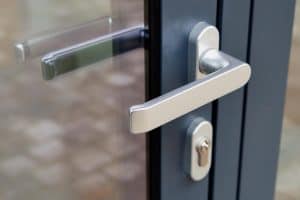Doors that don't require locking tend to make use of dummy door knobs. These are usually installed on doors without a hole bored for the knob to go through. So, how should they be installed? We asked professionals what steps to take to install a dummy door knob.
Dummy door knobs add to the aesthetic of your home's interior. One of the charms in using this type of door knob is the easy installation. You can install them with three simple steps:
- Pick a dummy door knob according to the door it will be placed on.
- Attach the door knob with two screws or more depending on the set.
- Test the knob by opening and closing the door to see if it is firmly attached.
Installing a dummy door knob is a quick process, but there are other factors for you to consider when choosing the right knob. In some cases, the installation varies with different types of doors. Keep reading as we discuss the function of a dummy door knob and how to attach it to doors under various conditions.

How Are Dummy Door Knobs Attached?
A dummy door knob stays in place with screws. Door knob variants that are lockable require other components to attach with them like a latch or strike plate. But with dummy door knobs, they usually only have the mounting hardware and the knob.
As opposed to other door knob types, dummy door knob installation is easier to complete. They don't come with many components, so it takes less time and work to attach them to a door.
See this Schlage one-sided dummy door knob on Amazon.
Steps In Attaching A Dummy Door Knob
The following instructions explain the basics of installing a dummy door knob:
- Prepare the needed tools to install the door knob. These include a measuring tape, a marker or pen, a drill, and a screwdriver. Be sure the drill is the same or close to the size of the knob's included screws.
- Use the tape measure to mark the spots for drilling. Doors won't always come with door holes for knobs but handle sets tend to provide measurements. Note the location of the knob and holes.
- Carefully drill through the marked holes. Drill deep enough to keep the screws in place. Do not drill through the other side of the door.
- Take the cover and align it to the newly drilled holes.
- Use the screws that come with the dummy door knob to attach it to the door. Tighten them as needed.
- Lastly, attach the knob itself. Place the dummy door knob in the proper position according to the cover plate. Firmly secure it with the screws.
Where Do You Put A Dummy Door Knob?
You can put a dummy door knob anywhere on a door. Unlike other door knobs, they don't come with latches. And so, it gives you the freedom to choose where to place it.
This type of door knob is often located on the exterior side of the door. A dummy door knob is an option used for doors without room to be placed inside. A few examples are shallow closets, pantries, and shelves.
Most dummy door knob sets include one knob for a single side. You can adjust the placement of the knob according to your preference since it would only need screws to be attached. A dummy door knob set with two knobs for either side of the door can still be placed anywhere but may require more work to move around.
Get this Hiemey dummy bi-fold door knob set on Amazon.
What Is A Dummy Door Knob Used For?
A dummy door knob is commonly used for decorative purposes on doors without a lock to function. These are fake knobs with no working parts and are often one-sided. They are frequently used on doors without room inside for a knob, such as shallow closets with double doors.
One of the distinct features of a dummy door knob is its non-locking and non-rotating feature. This type of knob operates through pushing and pulling. Because of this, they are ideal for decor purposes, particularly on non-locking interior applications.
Passage door knobs have a similar mechanism. However, dummy door knobs do not turn while passage door knobs do but have no locking feature. Passage door knobs can be used as substitutes for dummy door knobs without the latch, but these will still rotate.
See these Coolnews crystal glass dummy door knobs on Amazon.
How Do You Put A Dummy Door Knob On A Pre-Bored Door?
Dummy door knobs can go on pre-bored doors by filling up or covering the pre-bored hole before placing the knob. Attaching a dummy door knob to a pre-bored door takes extra work, but it is possible.
If you are looking to use a knob set with a plate big enough to cover up the hole, you can simply screw it on. For options that aren't big enough, here's how you should install the knob:
- Prepare your dummy door knob and the other tools needed. For best results, include wood or polyester putty, a putty knife, and sandpaper.
- Cover up the hole with the putty and spread it flat with the knife. Polyester putty is best if you will paint over it. If you will stain it, opt for wood putty instead.
- Leave the putty to dry completely.
- Use the sandpaper to smoothen the putty.
- Paint or stain the putty to match the door. You can do this until it becomes unnoticeable.
- Once dry, install the dummy door knob as per the instructions mentioned above.
How Do You Put A Handle On A Hollow Door?
When placing handles on hollow doors, you will have to cover up the hole first. Like with installing dummy door knobs on pre-bored doors, there should be enough support to hold the handle. In attaching door handles to hollow doors, it's vital to ensure the knob will firmly hold onto the door. If there's too much room, they could end up loose and damage the door.
The steps below show how to put a handle on a hollow door:
- Choose what type of door knob you will be using. Note that there are handles without latches, so you would have to purchase them separately. As much as possible, use handles with a bolt through fixing holes on the lock or latch.
- Cut a block of wood at the thickness of the door's gap. You can also use putty to cover up the area where you will be placing the knob.
- Stick in the piece of wood or let the putty dry. Stain or paint over the patch if necessary.
- When the door is ready, position the handle in its proper place and mark where it goes.
- Drill the markings you made.
- When installing the latch and handle, consider using bolts that go all the way through both sides of the plate rather than two separate screws. It ensures the nuts stay in place even without much support from the door.
In Summary
Dummy door knobs are a cheap option for additional hardware that involves little work to attach, mainly because they do not lock or turn. To install them, they only need to be screwed securely to the door. Placing them on pre-bored or hollow doors is also possible with larger base plates or covering up the gaps.






